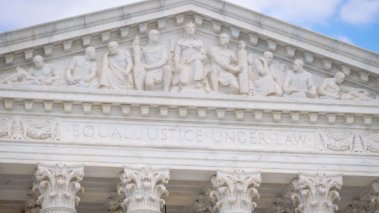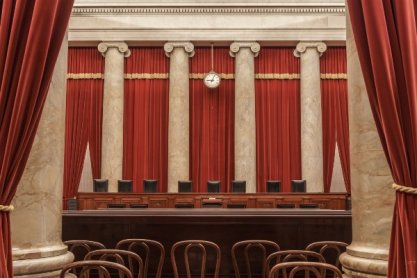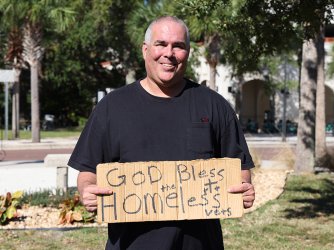Table of Contents
Why the Supreme Court’s Davis standard is necessary to restore free speech to America’s college campuses: Part I

(
Change is coming to the way college campuses deal with Title IX and issues of sex discrimination, harassment, and assault. On Nov. 16, 2018, the Department of Education’s Office for Civil Rights (OCR) issued draft regulations that, if implemented, will impact both due process protections and free speech rights on our college campuses.
These regulations represent a chance to reform our nation’s unjust and sometimes incomprehensible Title IX regime. Schools and students must currently attempt to follow a confusing, conflicting, and sometimes unlawful mix of legally binding regulations, guidance that has gone through a formal notice and comment process, guidance that simply reflects the preferences of a shifting cast of agency staff, and of course both state- and campus-level laws and rules that purport to effectuate or enhance responses to sex discrimination. (It’s important to note that while people generally think of sex discrimination, sexual harassment, and sexual assault as different things, they have all come to be considered forms of sex discrimination for purposes of Title IX.)
Not all of the complications will go away with new regulations, of course. But the proposed regulations do offer the hope of real improvements to agency protections of free speech and due process that will clarify the process and benefit everyone involved. Due process improvements in the proposed regulations include the right to a live hearing where witnesses can be confronted, the right to adequate notice of the charges, the right to be presumed innocent, and more. They would also require critical access to support services for complainants.
But the most important aspect of the new regulations is that they may finally require schools answer the following question correctly: When does conduct among students cross the line from being annoying, irritating, or offensive into being actual harassment? Answering this question properly would likely represent the greatest advance for free speech on America’s campuses in a generation.
The Supreme Court and the Davis standard for peer harassment in the educational context
In 1999, the Supreme Court issued its opinion in Davis v. Monroe County Board of Education. Authored by Justice Sandra Day O’Connor and joined by Justices Stevens, Souter, Ginsburg, and Breyer, the case dealt with an elementary school student in Georgia who was subjected to a months-long pattern of conduct by a fellow student that included repeated attempts to touch her breasts and genitals and repeated, sexually explicit comments made to and about her, while little or no action was taken by the school district in response to her complaints.
The question, then, was this: At what point does this kind of student-on-student behavior rise to the level at which a school district becomes legally required to address it or face legal liability? The Court’s answer was that the behavior in question had to be that which is “so severe, pervasive, and objectively offensive, and that so undermines and detracts from the victims’ educational experience, that the victim-students are effectively denied equal access to an institution’s resources and opportunities.”
"With Davis still good law today, for the Department of Education to issue full-blown regulations that set a different standard from Davis, as some suggest it should, would be a serious mistake."
This standard was carefully crafted by the Court to avoid putting educational institutions in a position where they would have to infringe upon students’ right to free expression in order to avoid liability for their own actions, or lack thereof.
As is unsurprising in these politically charged times, the use of one part or another of this standard has run into opposition. Ultimately, however, all of the arguments for weakening the Davis standard fall short of what is required by the First Amendment and necessary to protect the right to free speech on campus. In this blog series we’ll address the most common and/or noteworthy of these arguments and explain why they just don’t make the case.
Failing Argument #1: The Davis standard comes from a case that determined when schools are liable for their inaction on sexual harassment, so it’s not relevant for use in cases about what actually constitutes such harassment.
Some commenters on the proposed regulations have argued that since Davis was about determining a school district’s liability for “deliberate indifference” to sexual harassment, not directly about the definition of harassment itself, the standard it promulgated is the wrong one to use when defining harassment. It’s true that Davis was not a First Amendment challenge against a speech regulation. But that doesn’t mean that it’s not the correct standard to use, for a number of reasons.
Since 2001, OCR has claimed that Davis standard applies to harassment
Exhibit A in the case that the Davis standard is relevant in determining the proper bounds of the definition of harassment is the fact that the Office for Civil Rights certainly thought it was when the Davis opinion was issued. In 2001, OCR issued a document titled “Revised Sexual Harassment Guidance: Harassment of Students by School Employees, Other Students, or Third Parties” (which was a revision of a 1997 document on the same topic). This document has a number of problems, not least of which is that it ends up being so muddled as a whole on the definition of harassment that it ended up laying much of the groundwork for the confusion over what constitutes harassment that remains to this day. (More on this in Part II of this blog series.) But tellingly, one thing that is clear is the agency’s claim that its definition and the one found in Davis were effectively the same. On page v and vi of introduction to the 48-page document, OCR writes:
One commenter urged OCR to provide distinct definitions of sexual harassment to be used in administrative enforcement as distinguished from criteria used to maintain private actions for monetary damages. We disagree. First, as discussed in the preamble to the proposed revised guidance, the definition of hostile environment sexual harassment used by the Court in Davis is consistent with the definition found in the proposed guidance. Although the terms used by the Court in Davis are in some ways different from the words used to define hostile environment harassment in the 1997 guidance (see, e.g., 62 FR 12041, “conduct of a sexual nature is sufficiently severe, persistent, or pervasive to limit a student’s ability to participate in or benefit from the education program, or to create a hostile or abusive educational environment”), the definitions are consistent. Both the Court’s and the Department’s definitions are contextual descriptions intended to capture the same concept -– that under Title IX, the conduct must be sufficiently serious that it adversely affects a student’s ability to participate in or benefit from the school’s program. In determining whether harassment is actionable, both Davis and the Department tell schools to look at the “constellation of surrounding circumstances, expectations, and relationships” (526 U.S. at 651 (citing Oncale)), and the Davis Court cited approvingly to the underlying core factors described in the 1997 guidance for evaluating the context of the harassment. Second, schools benefit from consistency and simplicity in understanding what is sexual harassment for which the school must take responsive action. A multiplicity of definitions would not serve this purpose.

Unfortunately, “a multiplicity of definitions” — many or most of which restrict protected speech — is precisely what we have ended up with on campuses across the country. And while colleges themselves bear most of the blame for adopting overbroad definitions of sexual harassment, the fact that 2001’s OCR argued, for example, that its own “severe, persistent, or pervasive” language meant the same thing as the Supreme Court’s “severe, pervasive, and objectively offensive” language has not helped matters. Not only are the elements different, but “and” and “or” don’t mean the same thing — ask any lawyer, or (and?) a computer programmer.
The most likely explanation for why 2001’s OCR said that its guidance was in agreement with the Davis standard was that OCR knew that the guidance would likely be shot down in court if it hadn’t. After all, eliding differences with the Supreme Court is one thing. Ignoring the Court completely is quite another. And with Davis still good law today, for the Department of Education to now issue full-blown regulations (a legal step up from 2001’s “guidance”) that set a different standard from Davis, as some suggest it should, would be a serious mistake. Nearly as bad would be a failure in the final regulations to finally make clear that the Davis standard is the correct standard to use for sexual harassment in the educational context, and set campuses up for another generation of censorship aimed at students and lawsuits aimed at administrators.
Courts have applied the Davis standard in cases for injunctive relief, not just for money damages
A subsidiary part of the “Davis is only about liability” argument consists of the assertion that Davis has been understood by courts to only apply to money damages. This is simply not true; they have used it for injunctive relief as well.
Cases in which this has occurred include Hill v. Cundiff, 797 F.3d 948, 972-73 (11th Cir. 2015) (reversing summary judgment against plaintiff’s claims for injunctive relief because a jury could find that the alleged conduct was “severe, pervasive, and objectively offensive” under Davis); B.H. ex rel. Hawk v. Easton Area Sch. Dist., 725 F.3d 293, 322-23 (3d Cir. 2013) (upholding preliminary injunction against school for banning students from wearing bracelets because the school failed to show that the “bracelets would breed an environment of pervasive and severe harassment” under Davis); Haidak v. Univ. of Mass. at Amherst, 299 F. Supp. 3d 242, 270 (D. Mass. 2018) (denying plaintiff’s request for a preliminary injunction because he failed to show that that school was deliberately indifferent to an environment of severe and pervasive discriminatory conduct under Davis); Jones v. Pi Kappa Alpha Int’l Fraternity, 2017 U.S. Dist. LEXIS 148806, at *31 (D.N.J. Sep. 13, 2017) (allowing plaintiff’s claim for injunctive relief to proceed after finding that plaintiff’s allegations of harassment, if true, are “severe, pervasive, and objectively offensive” under Davis); and Tveter v. Derry Coop. Sch. Dist. SAU # 10, U.S. Dist. LEXIS 73516, at *24 (D.N.H. Apr. 25, 2017) (analyzing student’s request for preliminary injunction under Davis’s requirement that sexual harassment must be “severe, pervasive, and objectively offensive” to be actionable).
If the Davis standard was only about a school’s liability, or only about when to award money damages, why did these courts use it for injunctive relief?
In Davis, the Court considered the effects its decision would have on student speech
The Davis opinion, particularly in the interplay between the majority and dissent in that 5-4 decision, makes it pretty clear that the Court was thinking about the effect its decision would have on student speech. In fact, the majority opinion gets a little bit defensive about criticism from the minority that the standard it was proclaiming would lead to too many restrictions.
Authored by Justice Anthony Kennedy, the dissent in Davis warned of “campus speech codes that, in the name of preventing a hostile educational environment, may infringe students’ First Amendment rights.” Kennedy noted that “a student’s claim that the school should remedy a sexually hostile environment will conflict with the alleged harasser’s claim that his speech, even if offensive, is protected by the First Amendment.” Kennedy also warned that “[t[he majority’s test for actionable harassment will, as a result, sweep in almost all of the more innocuous conduct it acknowledges as a ubiquitous part of school life.”
In response, Justice O’Connor’s majority opinion was very careful to “acknowledge that school administrators shoulder substantial burdens as a result of legal constraints on their disciplinary authority.” Addressing Kennedy’s concerns, O’Connor reassured the dissenting justices that it would be “entirely reasonable for a school to refrain from a form of disciplinary action that would expose it to constitutional or statutory claims.” The careful standard laid out in Davis was purposefully designed to impose what O’Connor characterized as “very real limitations” on liability, in part as recognition of the importance of protecting campus speech rights.
Yes, the argument in Davis was over a school’s liability for money damages, since that’s what the case at bar was about. But to suggest that the Court didn’t consider its effect on how schools would then proceed to regulate speech, while avoiding the imposition of unconstitutional requirements on them, isn’t supported by the text. And since the Court did take these considerations into account, its analysis is probative for determining what a constitutional definition of peer harassment in the educational context might be.
In Davis, the Court actually chose less speech protection than the dissent preferred
It’s interesting, also, to observe that those criticizing the proposed regulations’ adoption of the Davis standard today are doing so in the belief that Davis too strictly defines sexual harassment (that is, that not enough speech or behavior is made punishable), and with the hope that OCR will promulgate a standard that will define more expression as sexual harassment, thereby further restricting student speech. But the fears of the dissenters in Davis were precisely the opposite — they believed the Davis standard was already too restrictive. (Of special note to those who care about free speech on campus is the fact that Justice Kennedy even warned about what he called “the majority’s failure to grapple in any meaningful way with the distinction between elementary and secondary schools, on the one hand, and universities on the other.” Davis, at 667.)
Those arguing today that the Davis standard is too speech-protective would be wise to consider that the Court’s 5-4 adoption of a standard even as restrictive of speech as Davis was a narrow thing indeed. The alternative was not more room to punish speech as harassment; it was less. This should serve as a stong hint about the outer bounds of the Constitution’s tolerance for student speech restrictions made in the name of fighting sexual harassment.
In the next installment, we will begin to look at why the components of the Davis standard are what they are, and why all of them are important in order to protect free speech on campus and abide by the First Amendment.
Recent Articles
FIRE’s award-winning Newsdesk covers the free speech news you need to stay informed.


FIRE Statement: X Corp's lawsuit and Texas's investigation into Media Matters for America are deeply misguided

Anonymous speech is as American as apple pie
